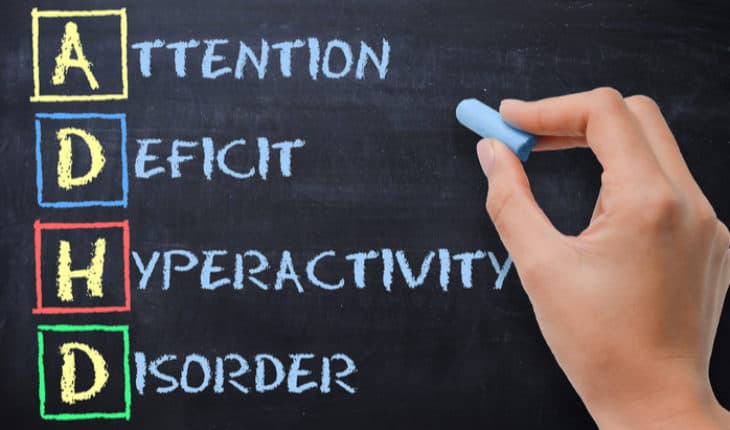Personal and financial costs of ADHD in Australia revealed: Researchers have revealed the key factors that can improve outcomes in children with ADHD, a disorder that costs Australia AUD$18 billion a year in social and economic losses.
Research, led by the Murdoch Children’s Research Institute (MCRI) and published in Pediatrics, highlighted the importance of identifying academic, behavioural and social functioning difficulties in the first years of school and empowering teachers and parents to intervene early.
The Journal of Attention Disorders study, led by the Australian ADHD Professionals Association (AAPDA) and Deloitte Access Economics in collaboration with MCRI researchers, revealed for the first time the true social and economic cost of ADHD to the Australian community.
The financial and non-financial costs of ADHD in Australia reached AUD$18.24 billion or AUD$22,400 per person during the 2018/2019 financial year.
MCRI Associate Professor Daryl Efron said little quality evidence had existed on the factors that influence changes in ADHD symptoms and impairments over time.
The Pediatrics study followed 477 children at age seven from the Children’s Attention Project over three years, and tracked their performance across a range of areas compared to children without ADHD. Only a minority of participants had been treated with medication.
The study found that children with ADHD who had a poor working memory (a limited capacity to hold information temporarily) at age seven tended to have poorer academic performance at age 10 year whereas ADHD symptom severity was linked to their emotional-behavioral outcomes. Children with ADHD who also had autism spectrum disorder symptoms at seven had poorer emotional and social functioning at 10 years of age.
Associate Professor Efron said given children with ADHD go on to experience persisting problems, early identification and treatment may help improve outcomes.
“The predictors for those who had worse outcomes were significant irrespective of whether children meet diagnostic ADHD criteria, suggesting clinicians should monitor children with symptoms even when they fall below the diagnostic threshold,” he said.
“Our results suggest that a broad clinical approach is needed to manage ADHD which includes not only symptom management, but also identification and management of other conditions which often coexist with ADHD.”
Associate Professor Efron said the research showed children with ADHD who had academic delays could be identified by teachers without the need for formal assessment, which could speed up intervention.
Prior to the Journal of Attention Disorders paper no international studies have comprehensively mapped the social and economic costs of ADHD across multiple areas and included both children and adults.
AADPA president Professor Mark Bellgrove said the data would help to shine a light on ADHD as a serious mental health condition in Australia and would hopefully improve public policy.
The study found the total financial costs associated with ADHD in Australia were about AUD$10.65 billion. The financial total includes productivity losses (mostly due to absenteeism, presenteeism and reduced employment) of AUD$8.6 billion, health system costs of AUD$459.2 million, education costs of AUD$106.0 million, crime and the justice system costs AUD$307.5 million and deadweight losses arising from the need to levy taxes to fund government expenditure on services and programs was AUD$1.1 billion.
The non-financial costs of lost wellbeing associated with reduced quality of life and premature deaths linked to ADHD amounted to AUD$7.6 billion in 2019.
MCRI and Deakin University Associate Professor Emma Sciberras said the considerable socioeconomic impact and burden of ADHD should drive investment and policy decisions to improve ADHD identification and treatment.
“This data points to the considerable public health significance of ADHD and the need for expansion of clinical services for the condition, as well as increased research investment,” she said.
In Australia 3.2 per cent (814,500) of people and one in 20 children have ADHD.
MCRI and University of Melbourne Professor David Coghill said the many structural challenges facing ADHD services should be rapidly addressed.
“One particular barrier to care facing young people with ADHD is the high risk of discontinuity of treatment when transitioning from paediatric to youth and/or adult services,” he said.
“The complex reasons for this include poor transition planning, lack of available services and trained professionals in the area, other life transitions occurring at the same time, and the shift during adolescence towards increased independence.
“There is also a need to improve screening approaches that can identify those at risk of ADHD early in life, which will go a long way to reducing the associated costs and burdens.”
Professor Coghill said with 81 per cent of the financial costs due to lost productivity, more workplace support was needed to help those with ADHD.
“Medication is likely to result in multiple functional benefits and additionally adjustments in the workplace can be considered, however, further research is needed to demonstrate the real world effectiveness and cost-effectiveness of such approaches,” he said.
Researchers from the University of Melbourne, The Royal Children’s Hospital, Monash University, La Trobe University, National Institute for Health Research Applied Research Collaboration in the UK, The University of Sydney, Joondalup Child Development Centre, University of Western Australia, Deloitte Access Economics, Metro North Mental Health Service, Brisbane, QIMRB Research Institute Herston, Queensland Centre for Mental Health Research, University of Queensland, Children’s Health Queensland Hospital and Health Service, Vrije Universiteit Amsterdam, Children’s Hospital at Westmead and the Hollywood Specialist Centre, Western Australia, also contributed to one or both studies.
Publication: Daryl Efron, Jan M. Nicholson, Vicki Anderson, Tim Silk, Obioha C Ukoumunne, Alisha Gulenc, Philip Hazell, Brad Jongeling and Emma Sciberras. ‘ADHD at Age 7 and Functional Impairments at Age 10,’ Pediatrics. DOI: 10.1542/peds.2020-1061
Publication: Emma Sciberras, Jared Streatfeild, Tristan Ceccato, Lynne Pezzullo, James G. Scott, Christel M. Middeldorp, Paul Hutchins, Roger Paterson, Mark A Bellgrove and David Coghil. ‘Social and Economic Costs of Attention-Deficit/Hyperactivity Disorder Across the Lifespan,’ Journal of Attention Disorders.
DOI: 10.1177/1087054720961828
*The content of this communication is the sole responsibility of MCRI and does not reflect the views of the NHMRC.
The Murdoch Children’s Research Institute (MCRI) is the largest child health research institute in Australia committed to making discoveries and developing treatments to improve child and adolescent health in Australia and around the world. They are pioneering new treatments, trialling better vaccines and improving ways of diagnosing and helping sick babies, children and adolescents. It is one of the only research institutes in Australia to offer genetic testing to find answers for families of children with previously undiagnosed conditions.
Funding
ADHD at Age 7 and Functional Impairments at Age 10 study was funded by the Australian National Health and Medical Research Council (project grant no. 1008522). A/Prof Efron was supported by a Clinician Scientist Fellowship co-funded from the Murdoch Children’s Research Institute (MCRI) and The Royal Children’s Hospital Foundation. MCRI is supported by the Victorian Government’s Operational Infrastructure Support program. Prof Nicholson was funded by the Roberta Holmes Chair for Contemporary Parenthood at La Trobe University. Prof Anderson was supported by a National Health and Medical Research Council Practitioner fellowship. Dr Ukoumunne was supported by the National Institute for Health Research Applied Research Collaboration South West Peninsula. A/Prof Sciberras was funded by a National Health and Medical Research Council Career Development Fellowship (1110688) and a veski inspiring women’s fellowship.
Social and Economic Costs of Attention-Deficit/Hyperactivity Disorder Across the Lifespan study was funded through the Australian Government under the Department of Health Mental Health program awarded to the Australian ADHD Professionals Association. ES is funded by a National Health and Medical Research Council Career Development Fellowship (NHMRC) (1110688) and a veski Inspiring Women’s Fellowship. MAB is supported by a NHMRC Senior Research Fellowship (Level B).
- New lipid-based pathway discovered as key to memory formation - 25th June 2025
- Crucial link could explain how Alzheimer’s takes hold - 25th June 2025
- Understanding Your Mind Can Improve Daily Life - 25th June 2025







